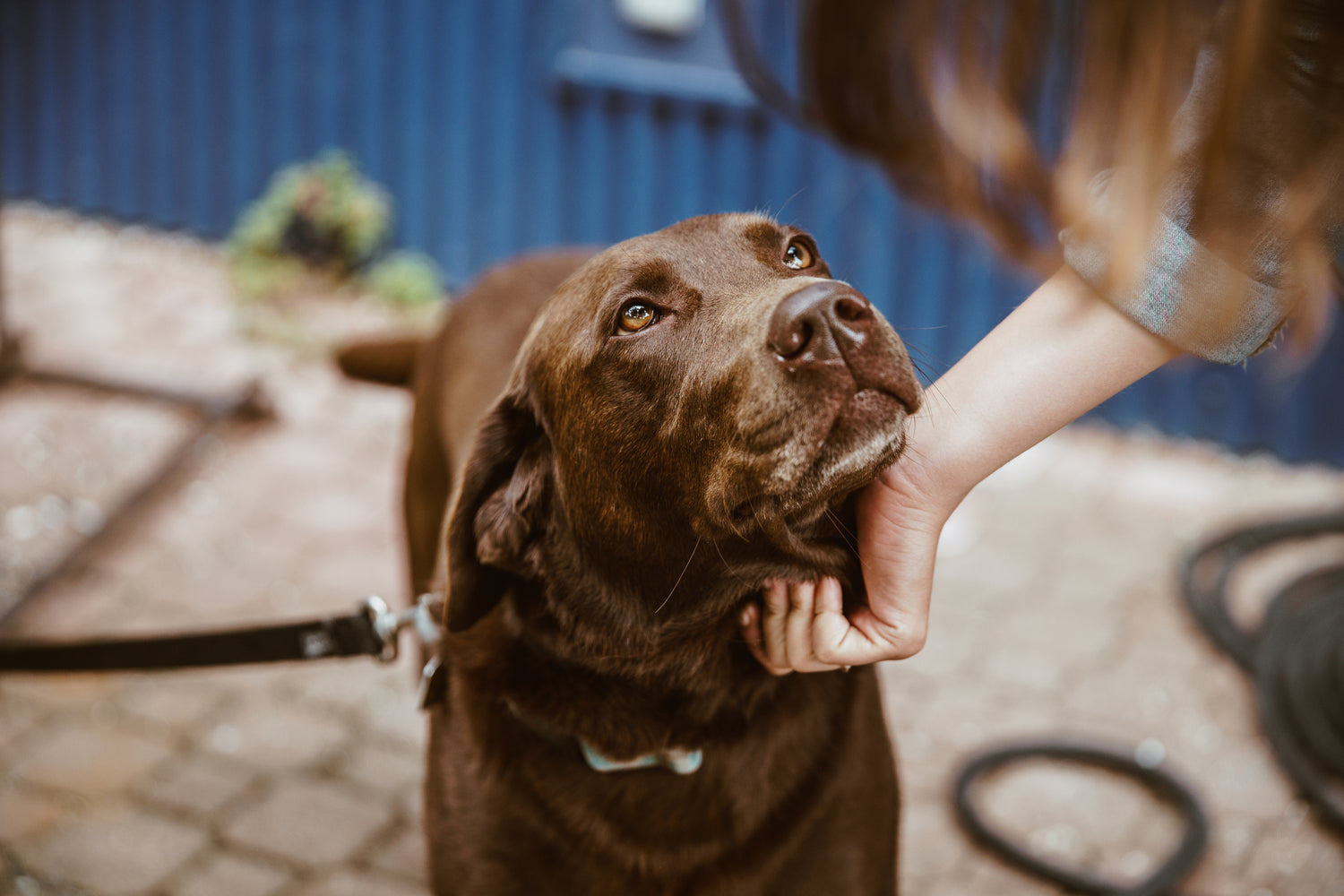Does My Dog Have Hip Dysplasia?
What Should I Do?

Hip dysplasia in dogs is a very common, painful orthopaedic condition, where the ball at the top of thigh bone (femur) doesn't sit well in socket of the hip joint. Hip dysplasia is an inherited condition. Although some breeds are more vulnerable to it than others - e.g. rapidly growing large breeds - any dog can develop it.
When your dog has been diagnosed as having hip dysplasia by your vet, they will give you an indication of the extent of the damage. They should give you a hip score. This will help you to understand the severity of the condition in your dog and in turn will inform which treatment for hip dysplasia is most appropriate for your individual dog.

Treatment options differ depending on the severity of the hip dysplasia and the level of pain your dog is experiencing from it. Some dog’s x-ray will show a relatively mild amount of abnormality, and yet the dog will display considerable pain or vice versa.
Sadly, hip dysplasia for dogs can't be reversed so once a dog has developed it, the condition can't be cured. Treatment and management is either surgical or conservative (non-surgical).
Treatment for hip dysplasia in a dog can involve a number of different surgeries. No one surgery is better than another, it just depends on how your individual dog has been affected.
As a general rule, as long as it is done appropriately, surgery is successful. For example a surgery called juvenile pubic symphysiodesis needs to be performed while your dog is under the age of 5 months - if performed after this age, however, there's little or no benefit. Other common surgeries include Total Hip Replacement (THR) and Triple Pelvic Osteotomy (TPO), or a Femoral Head and Neck Excision (FHNE).
TPO is usually performed in dogs either 10 months old or younger. It aims to restore joint stability and encourage normal joint development, as well as delay premature osteoarthritis. As such it is not appropriate if your dog has already developed a degree of osteoarthritis.
THR is more common in dogs over the age of 10 months or those who are already experiencing the onset of osteoarthritis. In a THR, just like in humans who have hip replacements, either one or both hip joints are replaced with a prosthetic. This restores normal, pain-free limb function and joint movement. This can be a very successful treatment option. Recovery time is usually 4-6 weeks post-surgery.
An alternative surgery is a Femoral Head and Neck Excision (FHNE). This is more of a salvage procedure when there is significant osteoarthritis and/or a total hip replacement is too costly, or the anatomy of your dog makes a THR unfeasible. Rigorous physiotherapy after FHNE surgery is essential for a good recovery.
Post-surgical care involves many of the measures outlined for conservative management. Weight control, physiotherapy/hydrotherapy, limited or modified exercise, medication, a supportive brace, warmth, appropriate bedding, and supplemental joint support are all aspects of conservative management.
Sadly the on-set of osteoarthritis is inevitable in a dog who has hip dysplasia, even after surgery. However, there are a number of conservative measures such as good weight management, controlled exercise, and giving a joint supplement, which can make a huge difference. In fact, studies have shown that up to 76% dogs with arthritis secondary to hip dysplasia, are able to function and live comfortable, good quality lives with conservative management.
Read more about Dog Hip Dysplasia Causes, Prevention and How to Help at home https://zoomadog.co.uk/collections/dog-hip-dysplasia-braces-signs-and-treatment
What Should I Do?
What Are The First Signs of Hip Dysplasia In Dogs?
What Are The Different Levels of Hip Dysplasia in My Dog?
What Should I Do?
What Should I Do?
For Hip Dysplasia For A Dog?
What Should I Do?
My Dog Has Very Bad Arthritis In His Hips. What Should I Do?
What Happens, Is It Successful, What I Should Know?
My Dog Is Too Old / Too Risky For Hip Dysplasia Surgery. What Are The Non-Surgical Options?
Can Physiotherapy and Hydrotherapy Help my Dog with Hip Dysplasia?
My Elderly Labrador has Hind Leg Hip Weakness. Does He Have Hip Dysplasia?
I Have a 13-year-old Border Collie with Hip Dysplasia in his Rear Right Hip. What Should I Do?
with Hip Dysplasia

We can help find the right solution for your dog
Feel free to give us a call on 01730 622544
or email us at woof@zoomadog.co.uk
Leave a comment